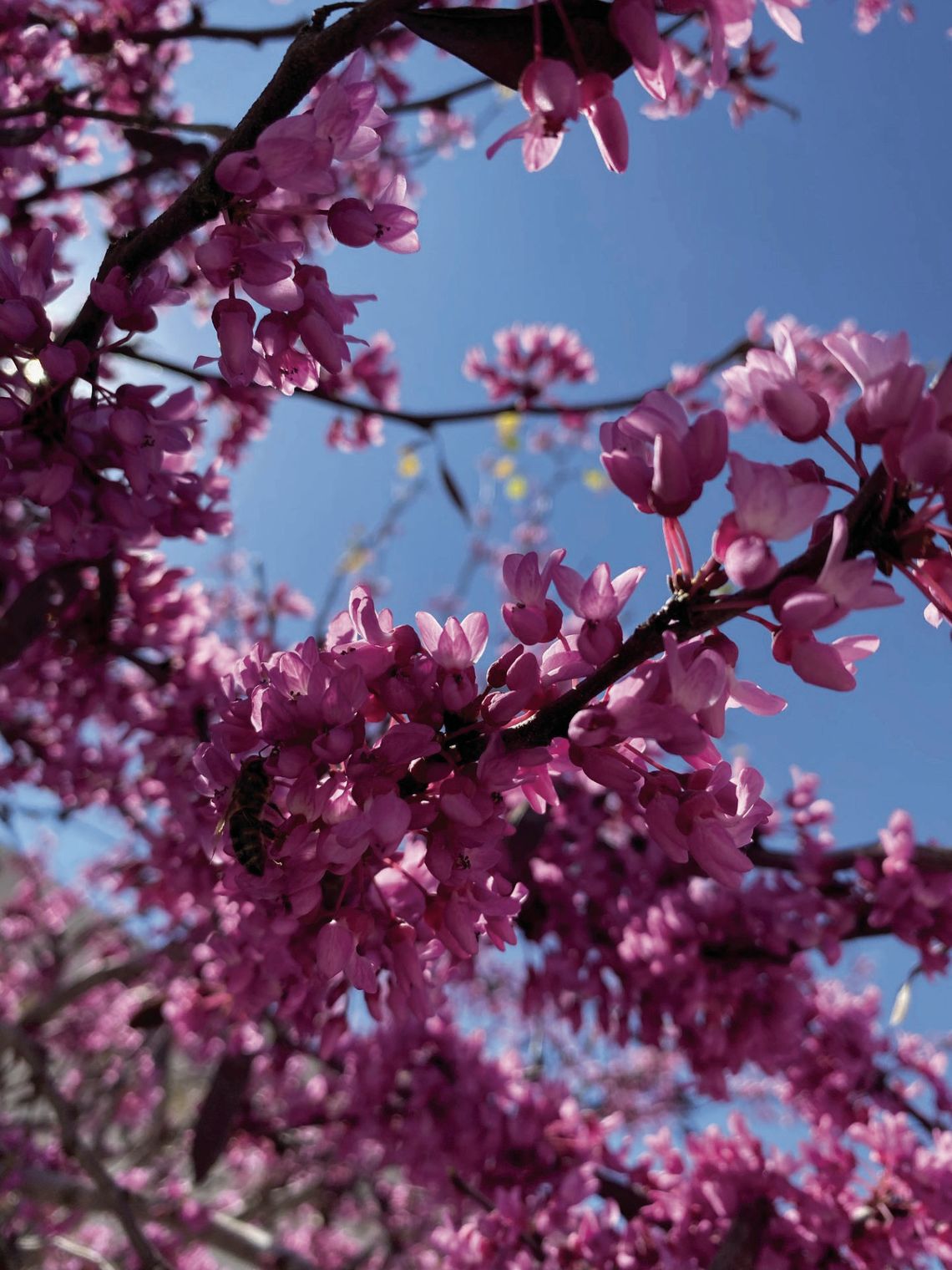The vibrant magenta flowers of redbud trees are one of the earliest harbingers of spring in Central Texas. The extra-early blooms are a welcoming sign that spring has arrived in our part of the state.
Redbud trees are popular ornamental landscape trees for their beautiful fuchsia-hued flowers in the spring but also for the large, heart-shaped leaves that emerge after the flowers fade. Redbuds are small trees that thrive in small spaces. They are considered understory trees because they don’t get especially tall and will grow beneath larger trees. They tolerate some shade and grow to under 40 feet tall.
There are more than 15 types of redbud trees, but here in Central Texas, there are three types that grow well for us. If you want to add an ornamental tree to your property, consider Eastern, Mexican and Texas redbuds. These three are all native to our part of the United States. The Mexican and Texas redbuds are slightly hardier to our soil types and climate.
Eastern redbuds leaves are large, thin and flat. The leaves on Eastern redbuds are more matte in sheen compared to the glossy, slightly curled leaves of Texas and Mexican redbuds. The Eastern redbud tends to be more susceptible to drought stress and sun scald in our hot summers.
Eastern redbuds benefit from afternoon shade to prevent the worst heat and drought stress.
Texas and Mexican redbuds are recommended for our area because they can tolerate the intense Texas summers and periods of extended drought. They don’t mind our alkaline soil either, which makes them great little trees for Blackland Prairie soil. Our black soil is alkaline, heavy clay and drains poorly.
When planting anything directly into heavy clay soil, add some compost in the planting hole. The compost will absorb extra water to help with drainage and will give the plants some extra nutrients as it breaks down.
The main difference between Texas and Mexican redbuds is size. Mexican redbud trees are a little bit smaller and don’t get as tall as a Texas Redbud. Mexican redbuds have smaller, glossier and wavy-edged leaves. They are also a little more drought tolerant than the Texas redbud.
Texas and Mexican and Eastern redbud trees turn golden yellow in the fall. If you like burgundy leaves, Eastern Redbuds come in a few varieties that have dark purple foliage. Look for varieties such as “Forest Pansy” and “Merlot” to add dark foliage to your yard.
Redbuds are members of the legume family and botanically related to beans, peas, bluebonnets, Pride of Barbados and mimosa trees. Legumes are nitrogen-fixing plants.
They can take nitrogen from the air and change it into a form that they can use for food.
Legumes work with the soil bacteria and convert nitrogen gas into a form of nitrogen that plants can use. Nitrogen is a key plant nutrient that is responsible for keeping leaves healthy and green.
Since Redbuds bloom in the very early spring, they are an important source of nectar for bees, butterflies, moths and hummingbirds.
Hummingbirds spend the winter in Mexico and Central America.
When the weather starts to warm up and the daylight increases, black chinned hummingbirds will start to migrate back to Central Texas.
If you are interested in having plants for pollinators and hummingbirds then consider adding a redbud tree to your landscape. They are pretty trees and will attract hummingbirds to your yard.
While not the most flavorful food, redbud flowers are edible. At different stages, the blossoms taste green and crisp like a snow pea with a tangy finish. The magenta buds are beautiful in baked goods and quite striking in a green salad.



